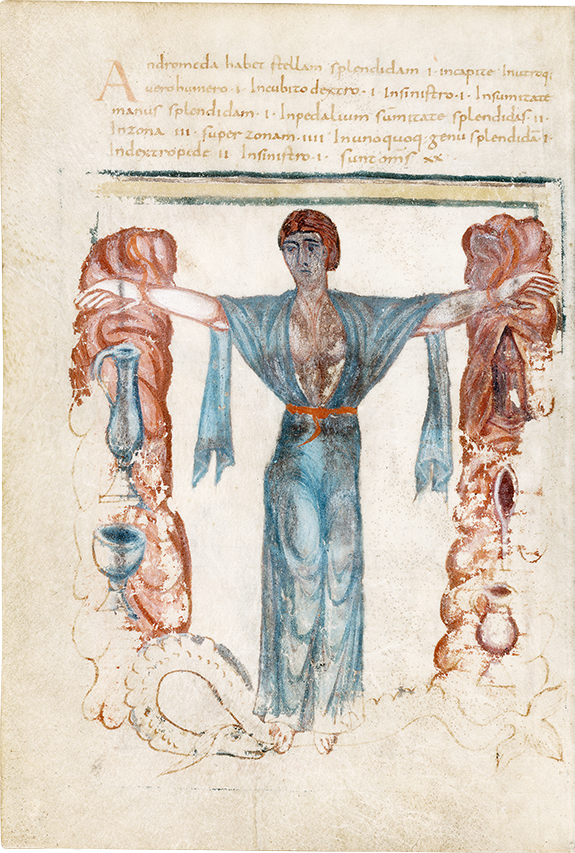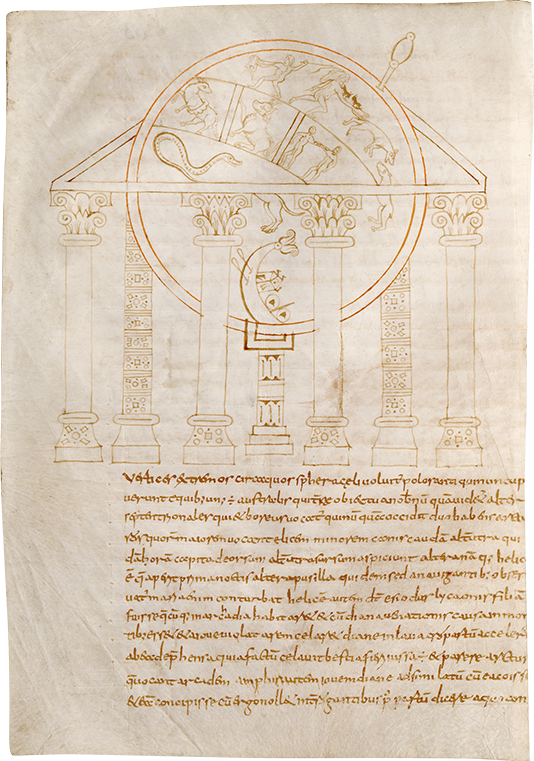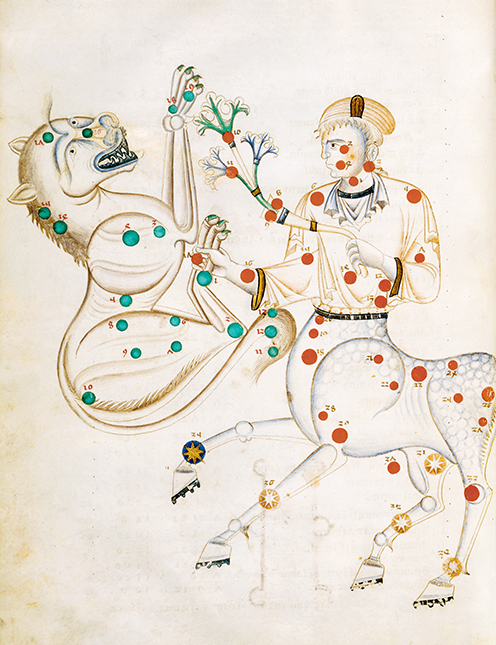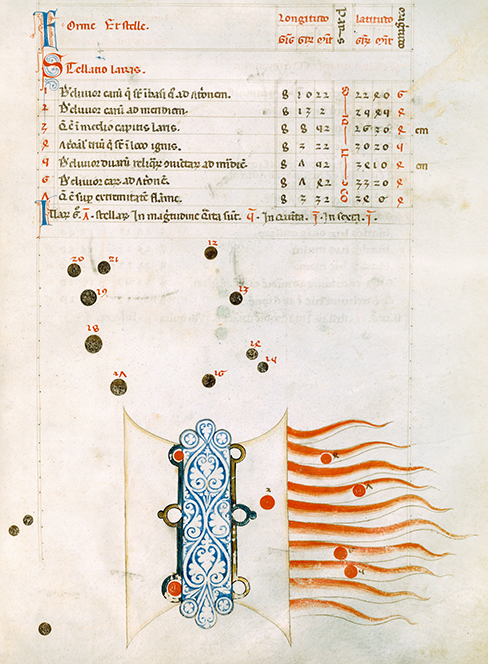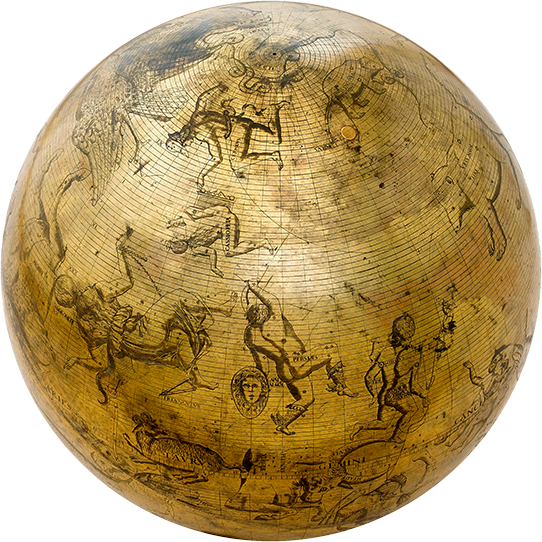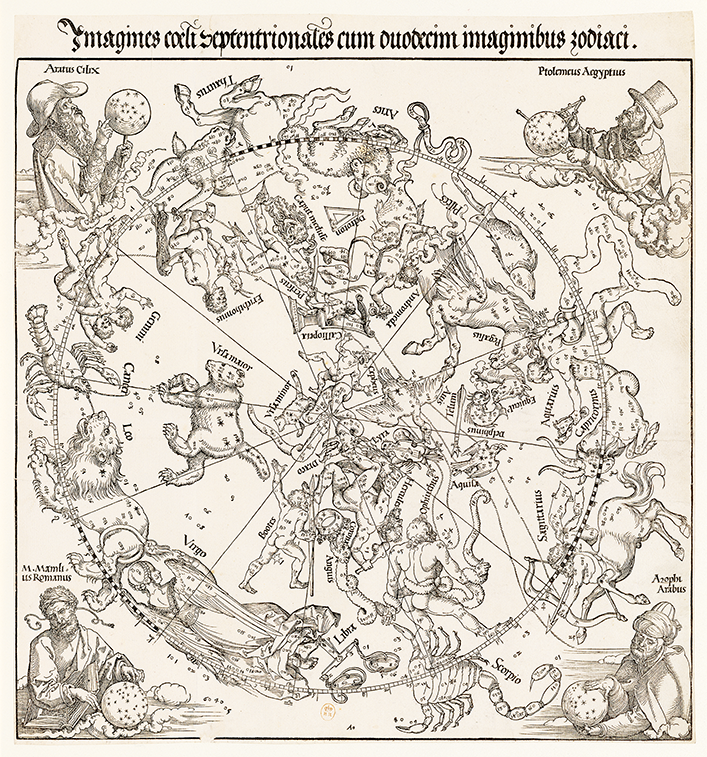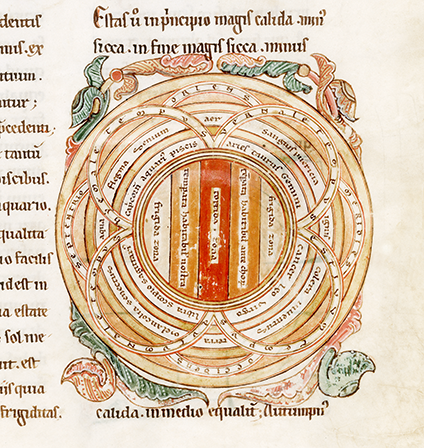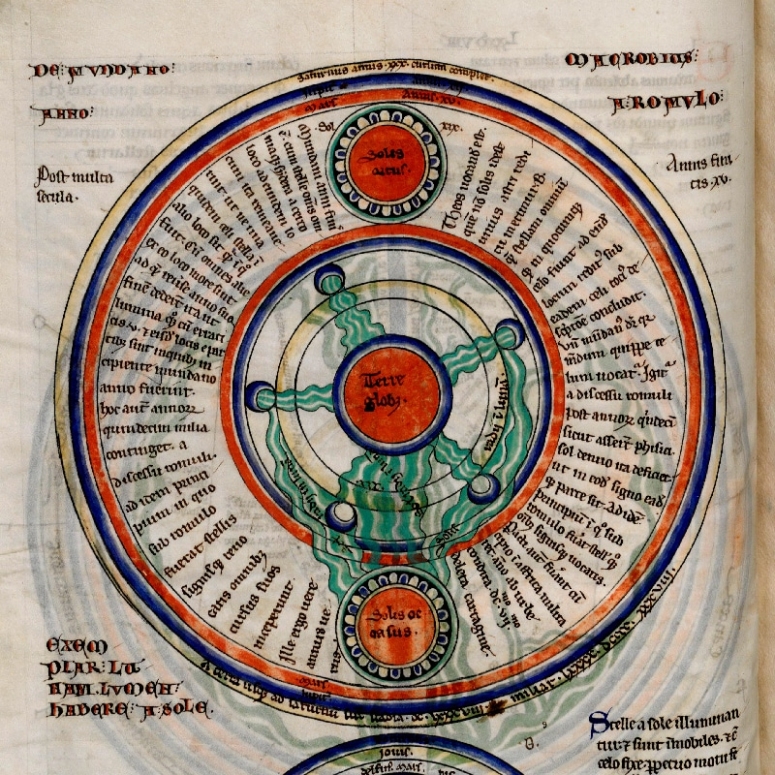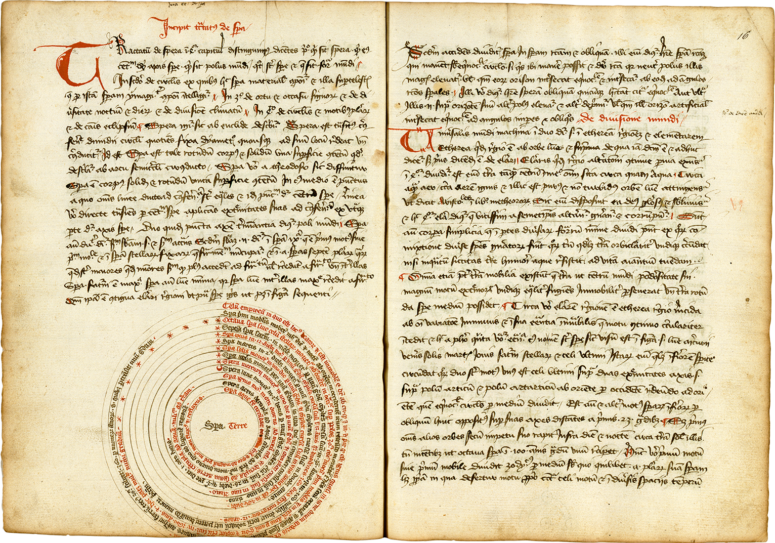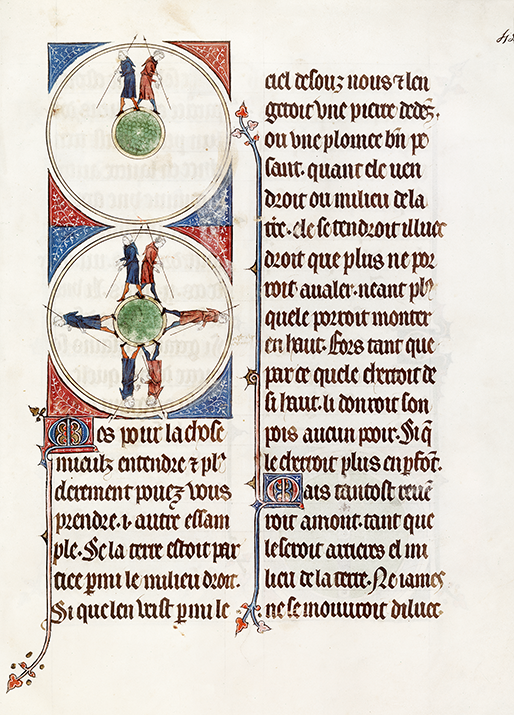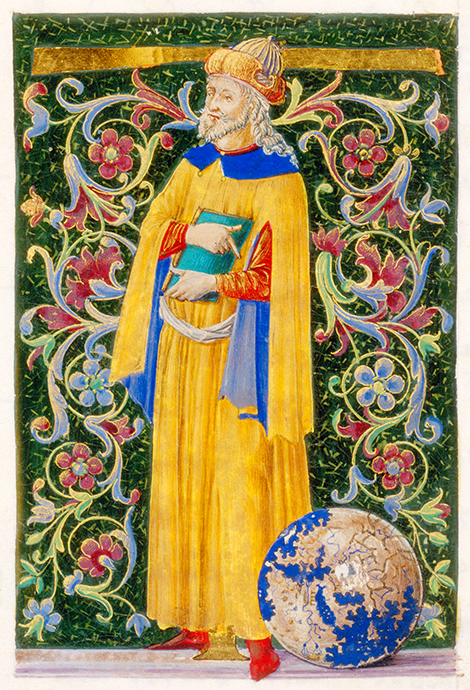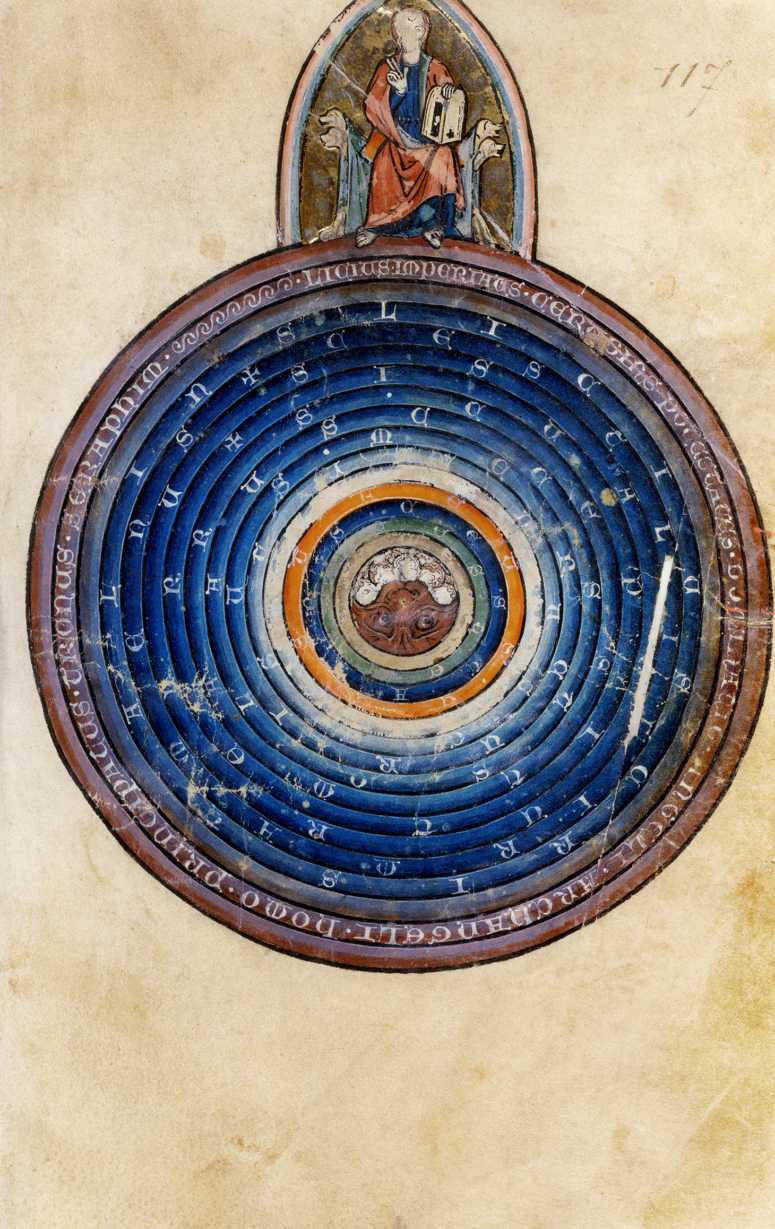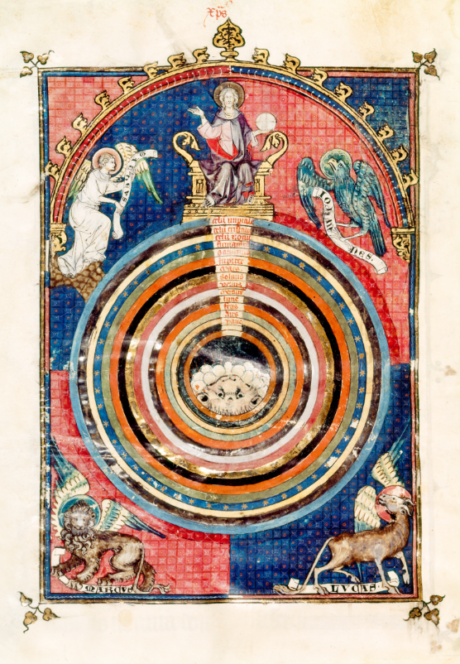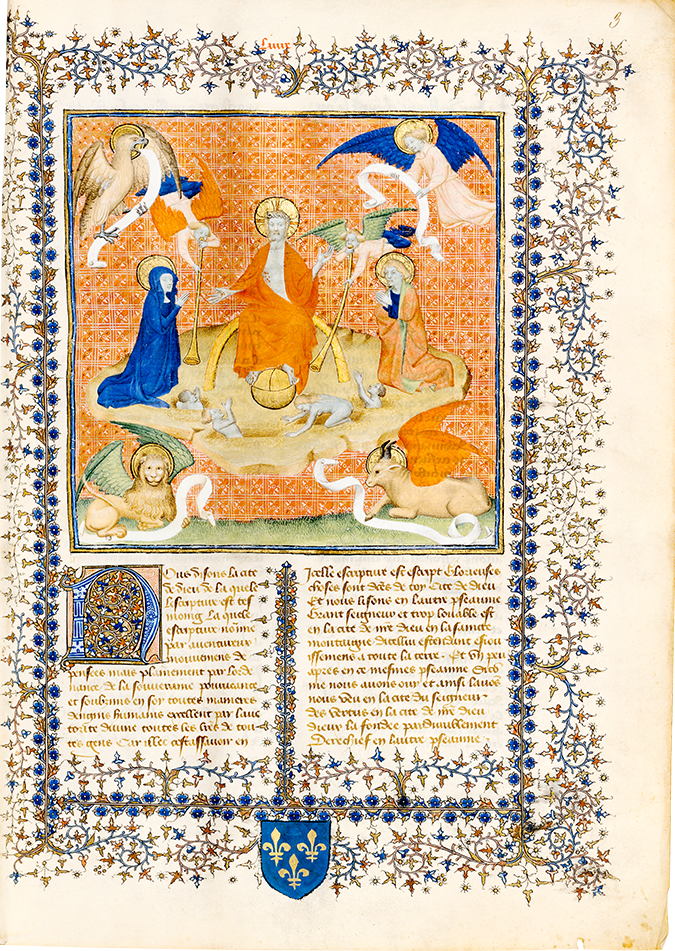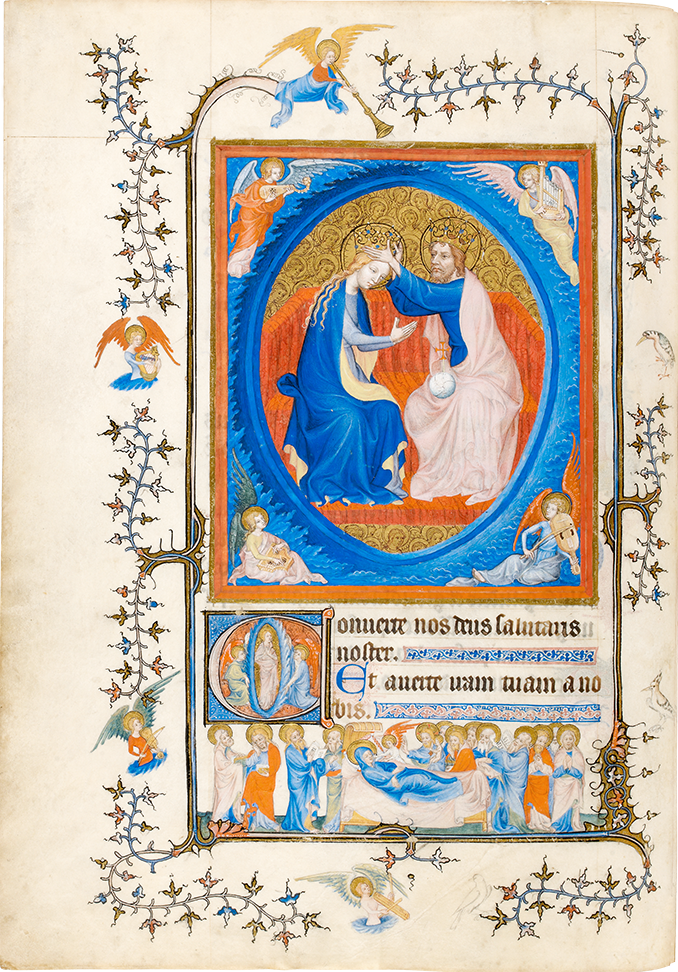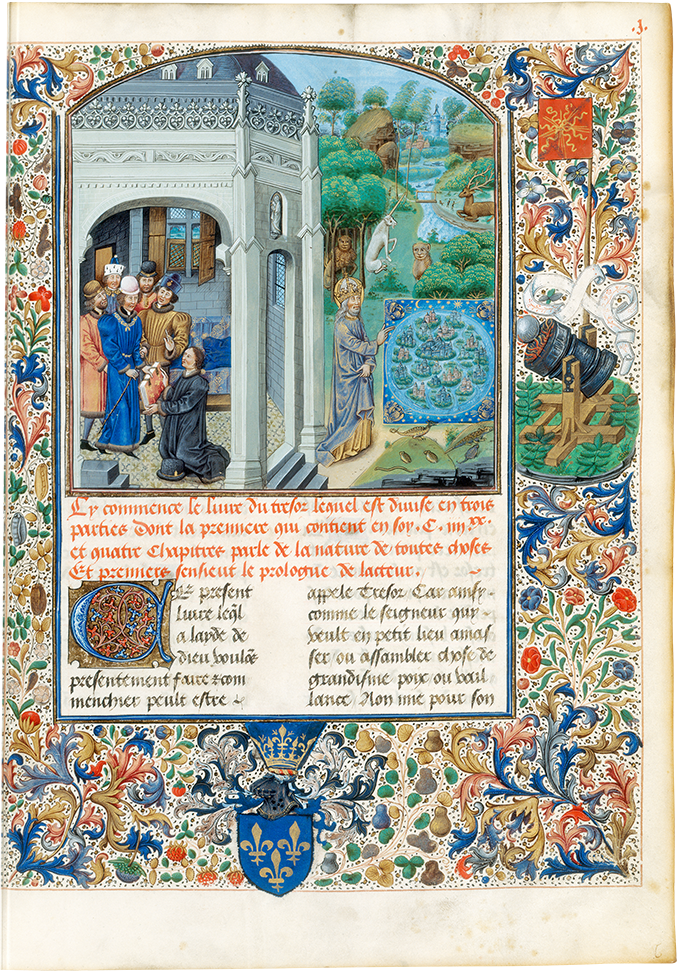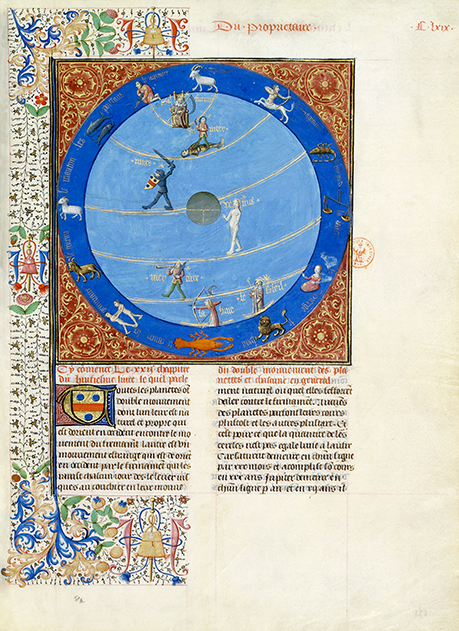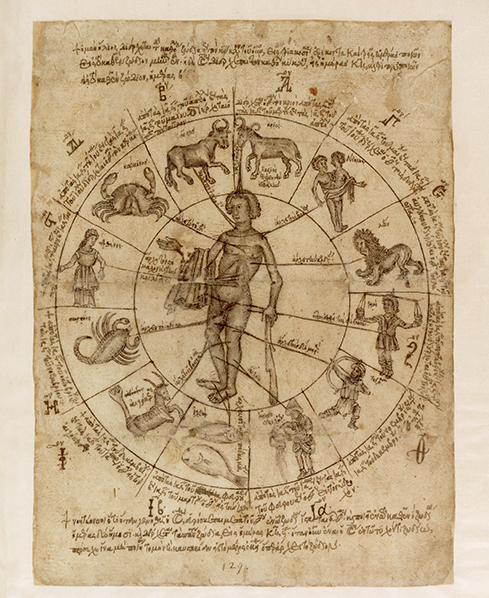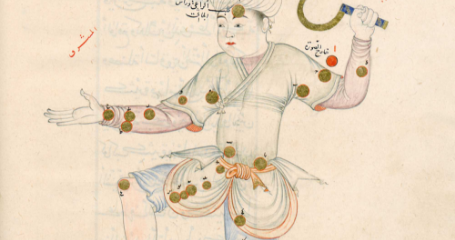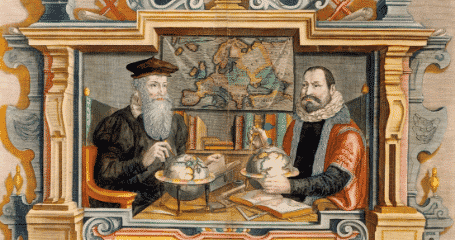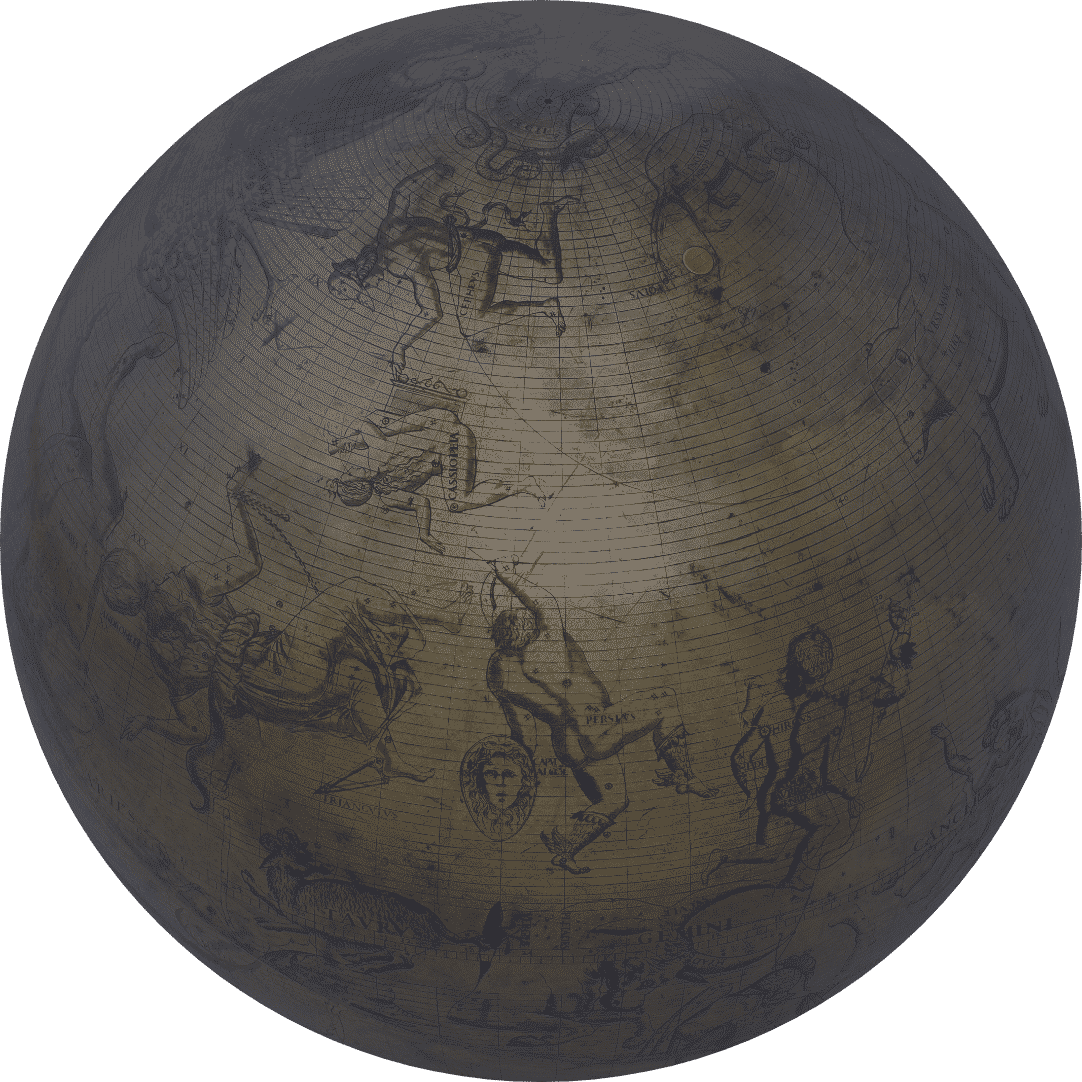
Spheres in Medieval Western Europe
After the fall of the Roman Empire, that culture’s scientific knowledge was partially lost to western Europe from the fifth to the tenth centuries. Thanks to the Arabic-Latin translations done essentially in the great scholarly centers of Muslim Spain (Cordoba and Toledo) from the eleventh century onwards, the West was able to rediscover a number of ancient texts (by Aristotle, Euclid and Ptolemy) as well as gaining access to the great thinkers of the Islamic world. This intellectual input paved the way for a veritable scientific renaissance, giving rise to new interpretations that adapted the ancient concepts to Christian dogma.
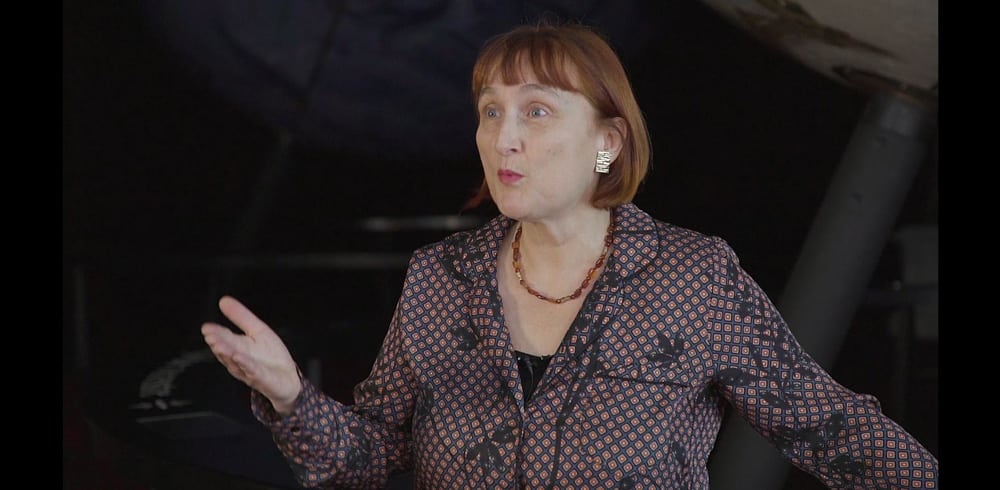
Western astronomy:
heir to two traditions
In astronomy, Latin translations of the poem “The Phenomena” by Aratus of Soli constitute the source for the first celestial maps produced in Europe, as well, undoubtedly, as for the globes designed by Gerbert d’Aurillac circa 1000.
Nonetheless, the Arabic-Latin translations of Ptolemy’s Almagest and Al-Sufi’s Book of Fixed Stars would bring about a profound renewal of western knowledge of the world. The association of those two traditions – Greco-Roman and Arab-Ptolemean – enabled the emergence of a unique celestial cartography in the west in the fifteenth century.
A round earth in the center of the spheres of the universe
Although it was contested by a few Christian authors in the early Middle Ages, the rotundity of the Earth, placed at the center of the spheres of the Universe, was accepted by most clerics from quite early on. With the twelfth-century scientific renaissance, new treatises, such as Lambert de Saint-Omer’s Liber floridus and Guillaume de Conches’s Dragmaticon Philosophiae, affirmed that principle.
The earliest didactic texts in Latin (Sacrobosco’s De sphaera mundi) or in the vernacular (Gautier de Metz’s encyclopedic poem, “L’Image du monde”) appeared in the 13th century. In the 15th century, the Latin translation of Ptolemy’s Geography and the first Portuguese and Spanish journeys of exploration bestowed new momentum on the spherical hypothesis, leading to the production of the first terrestrial globes.
A world in spheres
under the sign of god the creator
Nevertheless, ancient conceptions were reinterpreted according to Christian dogma: the Demiurge become God the creator of all things ruling the “machinery of the world.” Following Aristotle’s and Ptolemy’s example, this was conceived of as a series of spheres nested one inside the other, with a round, immobile Earth at the center. The extremes of the world, however, differed from the Ancient model. Formed from the four elements (earth, air, fire and water), the Earth enclosed Hell, often represented as a monster devouring the damned. At the other end of the spectrum, the world was no longer encompassed by the sphere of fixed stars or of Aristotle’s “first motor.” It was surrounded instead by the empyrean, the abode of the Creator, the angels and the blessed. Abundant medieval iconography illustrates this Christian conception of the world.
Globes in christian symbolism
Another inheritance from Antiquity, borrowed from Roman imperial symbolism, flourished in Medieval illuminations: the globe as an insignia of divine majesty, incarnated by the figure of God the Father, or of his son, Christ, shown either with a globe in his hand, or sitting or standing on the sphere of the world. Assimilated to the ancient Demiurge, the Christian god also figured in numerous manuscripts as an architect or geometer, compass in hand.
In western Christianity, as in Antiquity and all the way through to the Renaissance, astronomy and astrology were closely related, and determining astral influences on the Earth remained one of the main purposes for seeking to obtain knowledge of the world.
